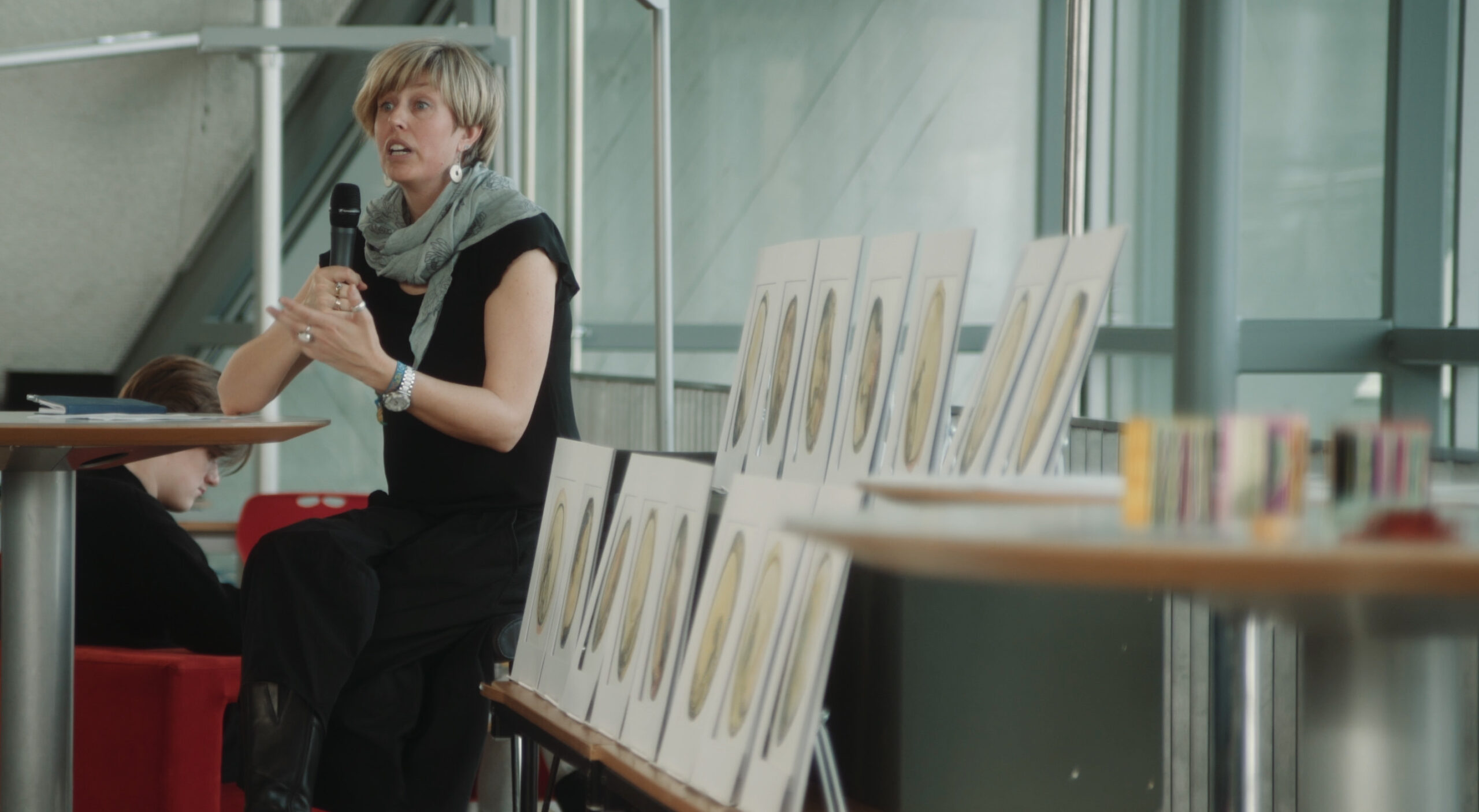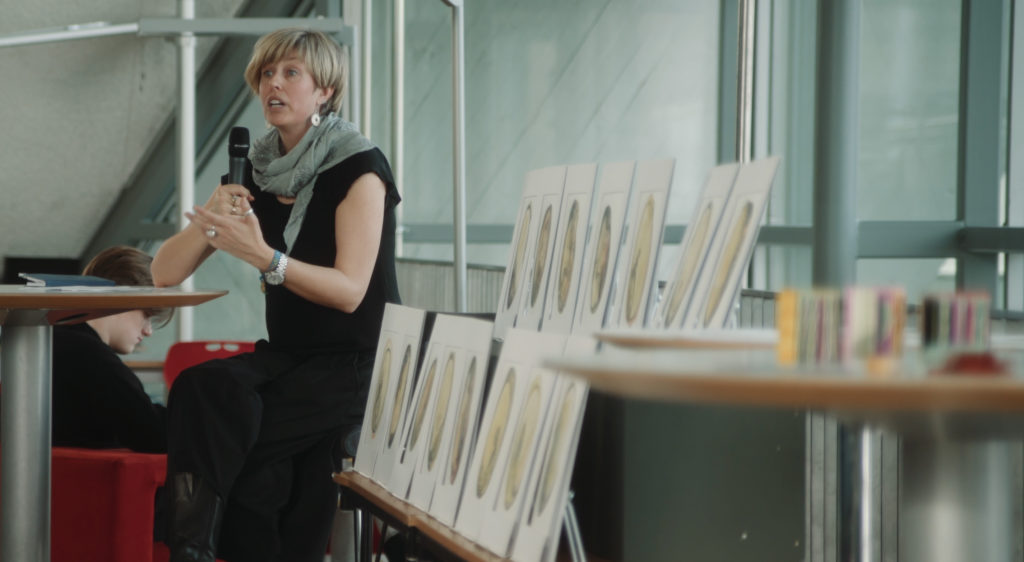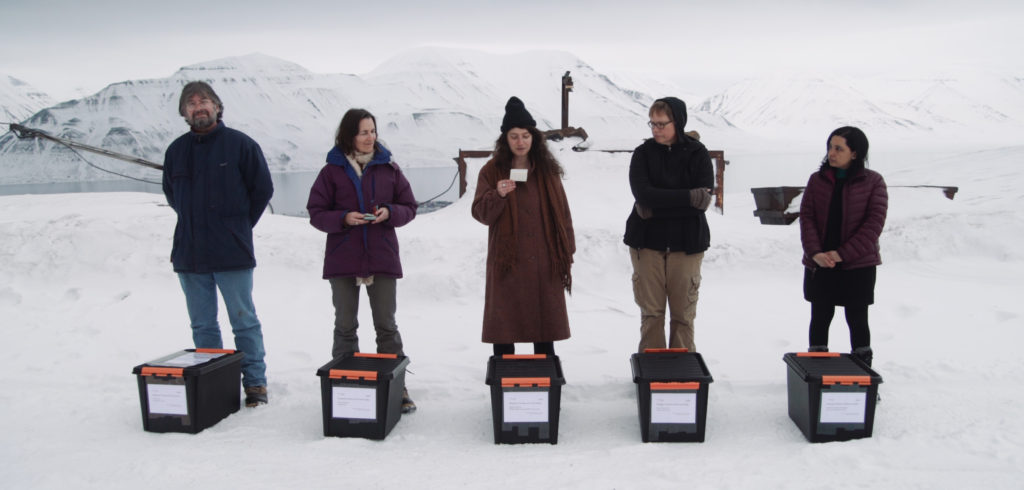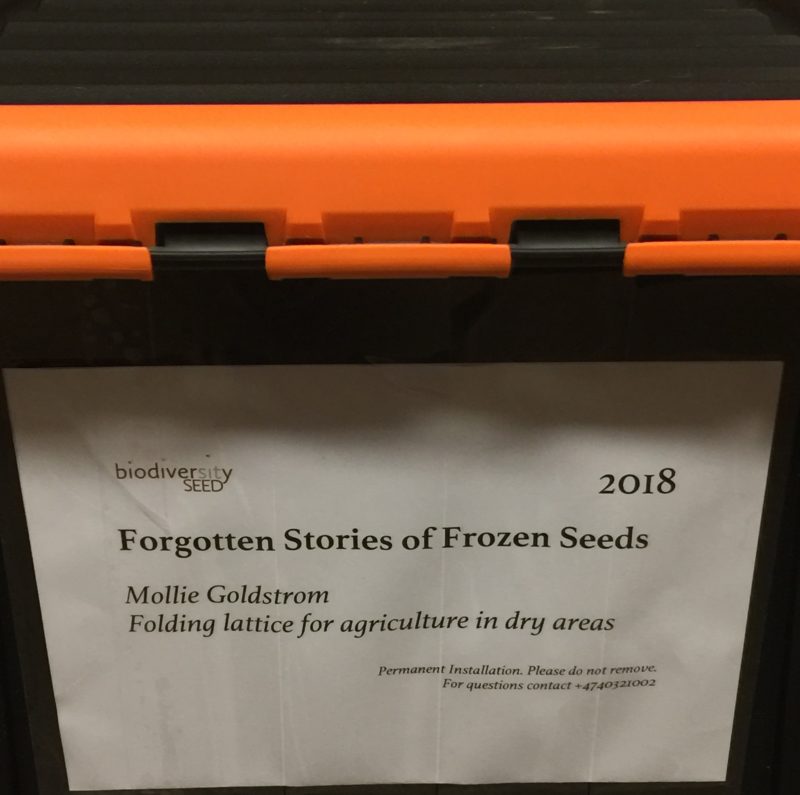
This has included work with indigenous farmers and research on the Svalbard Global Seed Vault. Last week, the project held an art exhibition that aimed to capture, communicate and conserve interconnections between nature and culture in living seeds.
The artworks were exhibited for one night only in Tromsø, before being packed inside sealed boxes and transported to Svalbard, just like the seeds in the Seed Vault. Here the sealed boxes of artworks were ‘planted’ into the permafrost of the mountain in coal mine no. 3, which is owned by Store Norske Spitsbergen Kulkompani.
This is the same site that the Nordic Gene Bank (now NordGen) used for its security back up of seeds from 1984-2008 and that provided the original inspiration for the Svalbard Global Seed Vault. Here the artworks will remain in permanent storage, resting forever in the mountain alongside the seeds in the neighboring Seed Vault.
Four international artists
The exhibition – titled “Forgotten Stories of Frozen Seeds” – was the result of a collaboration between scientists in the biodiverSEEDy project, professional artists and farming communities from all around the world. The project was led by Dr. Fern Wickson, Senior Scientist and Research Leader at GenØk – Centre for Biosafety in Tromsø. The aim of the exhibition was to raise awareness of the work of the Global Seed Vault and the importance of social, cultural and ecological connections to seeds.

To create this exhibition, an open call was made for artworks exploring the interrelationships between agricultural seeds and their cultural and/or ecological contexts. Based on the submitted proposals, four international artists were selected to be involved – David Voros, Sara Schneckloth, Mollie Goldstrom and Mary Robinson.
Farming communities involved
Farming communities from around the world were also invited to ‘sew the story of their seed’, and contributions, with received from Brazil, India, the Philippines, Kenya, Mexico, Costa Rica and the United States. These contributions were made into a quilt that was also deposited in the mine together with the artworks. During the exhibition in Tromsø, each of the participating artists spoke about the inspiration behind their works and the scientists discussed why art is important for agricultural biodiversity conservation. Before depositing their work in the mine, each artist also read a statement that they sealed in the box together with their artworks for permanent interment.
– Through this event, we want to remind the world of the interconnections that exist between nature and culture and to honor the important work farmers perform in generating and maintaining diverse agricultural plants, said Dr. Fern Wickson, leader of the biodiverSEEDy project. – Although it represents the closing event of our 4-year scientific project on agricultural biodiversity conservation, it is just the beginning of a campaign to better conserve the cultural connections of seeds. All of the scientists and artists involved would really like to see this continue as an annual event that creates a kind of complimentary vault for the stories of seeds.
Biocultural approaches should be developed

The biodiverSEEDy project, funded by the Norwegian Research Council, has investigated both in situ and ex situ approaches to crop diversity conservation, which includes freezing seeds in genebanks and supporting traditional farmers to continue their practices. The project found that while both approaches were clearly important and necessary, there was significant scope to improve the interactions and interconnections between them.
– While the Global Seed Vault is clearly an incredible and important achievement, many people feel that something significant has been lost when we freeze seeds as a way of conserving them, says Dr. Wickson. – What we documented to be missing is the sense of deep cultural significance and meaning these seeds have for people, as well as knowledge on aspects such as their various culinary uses or ecological interactions.
One of the project’s main conclusions is that developing more ‘biocultural’ approaches to crop diversity conservation could help address some of these concerns. – The conservation of agricultural biodiversity could be significantly strengthened by actively collecting the cultural stories connected to seeds and working to also conserve these for posterity in some way. This could be done through a kind of complimentary Vault like the one we have begun with this exhibition, or by enriching the type of information that is recorded in the passport data that accompanies the seeds, says Dr. Wickson.

